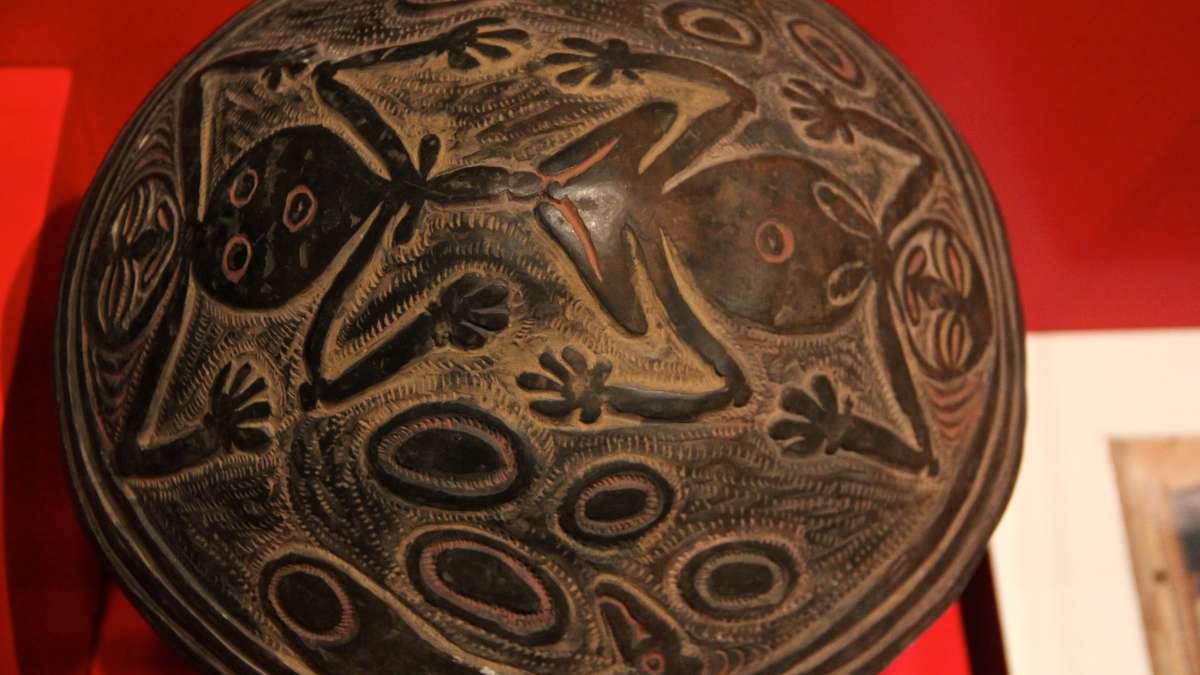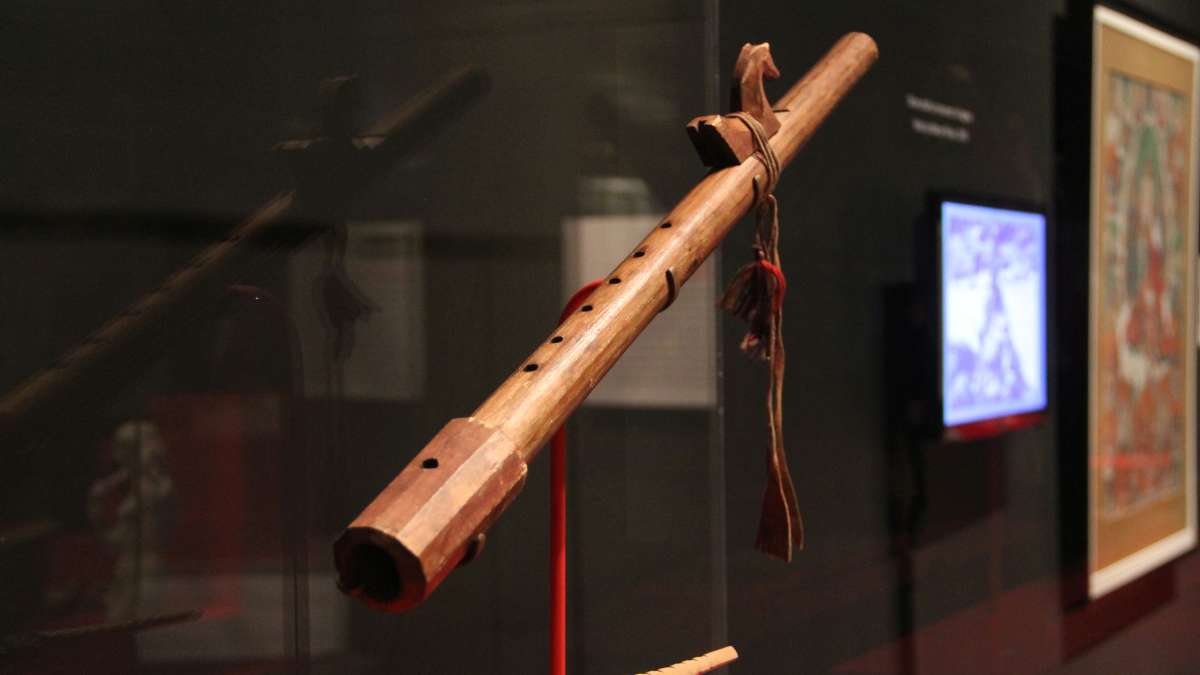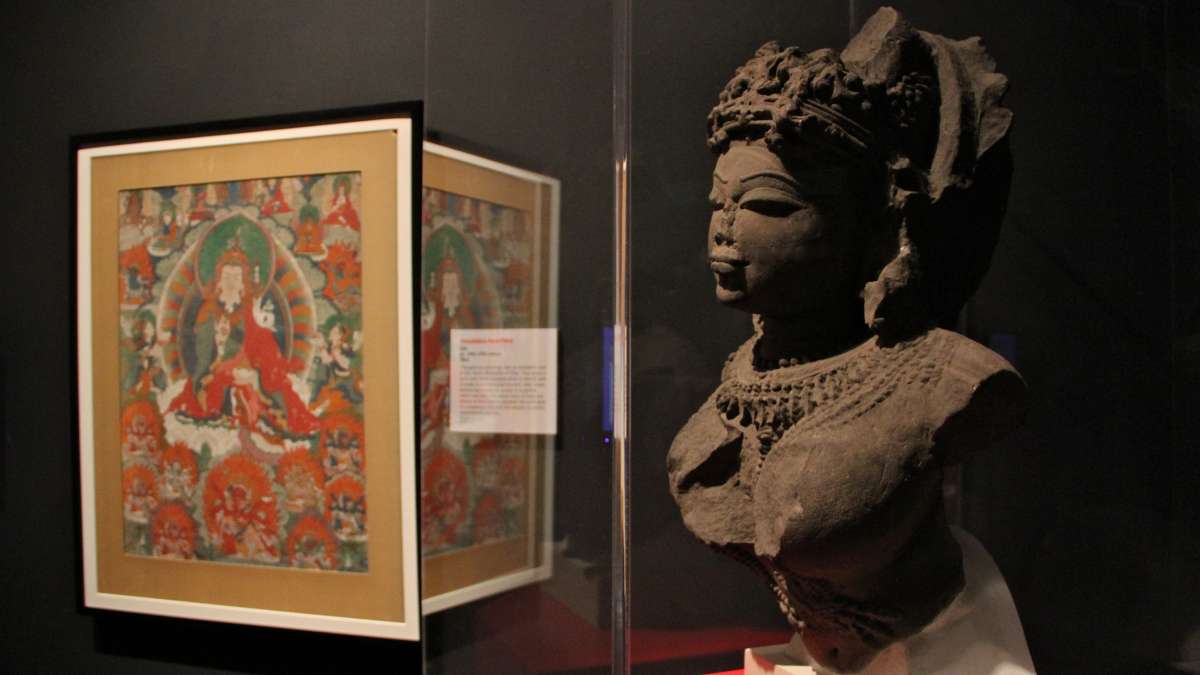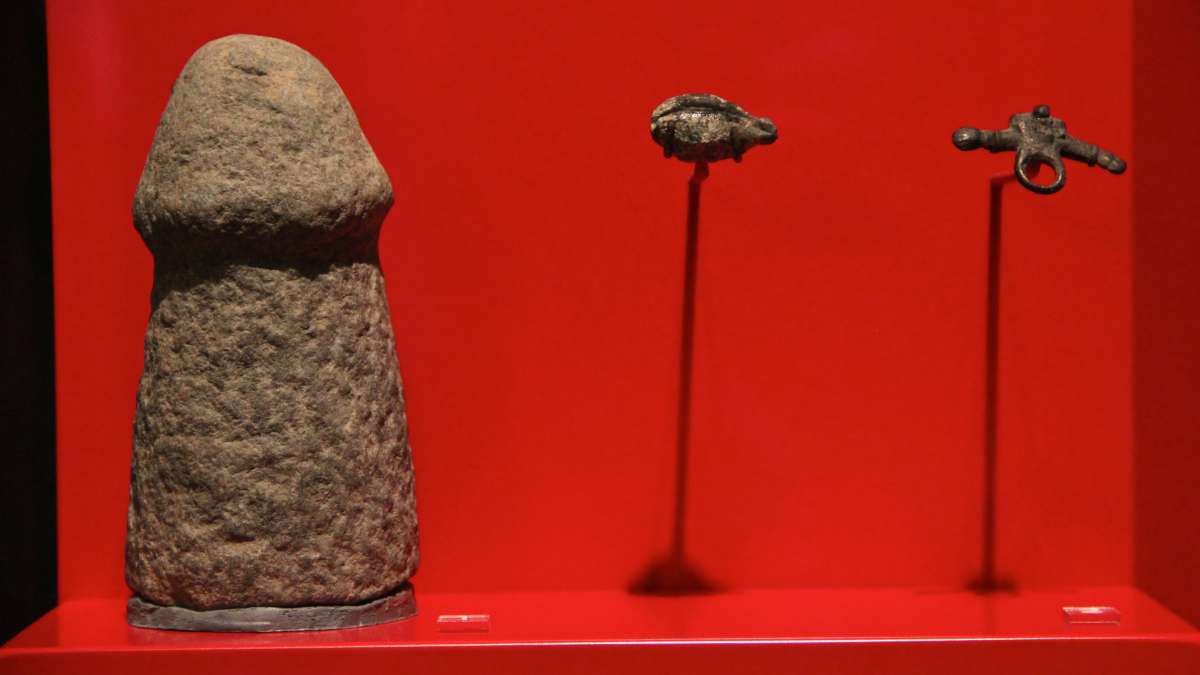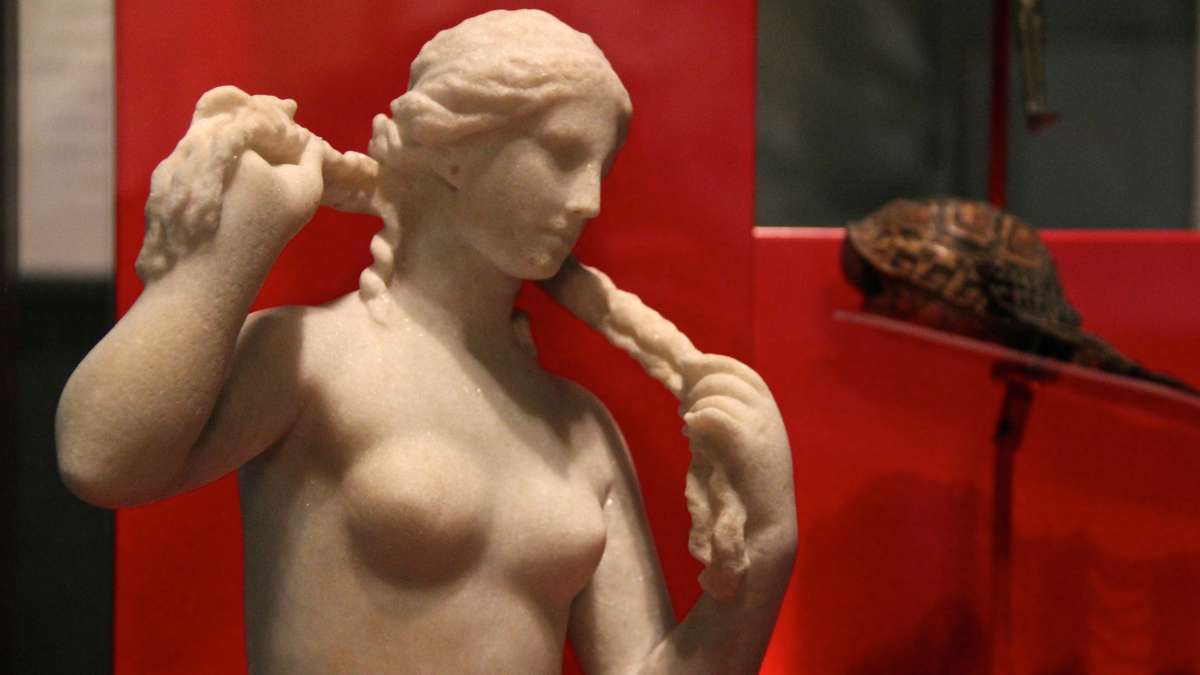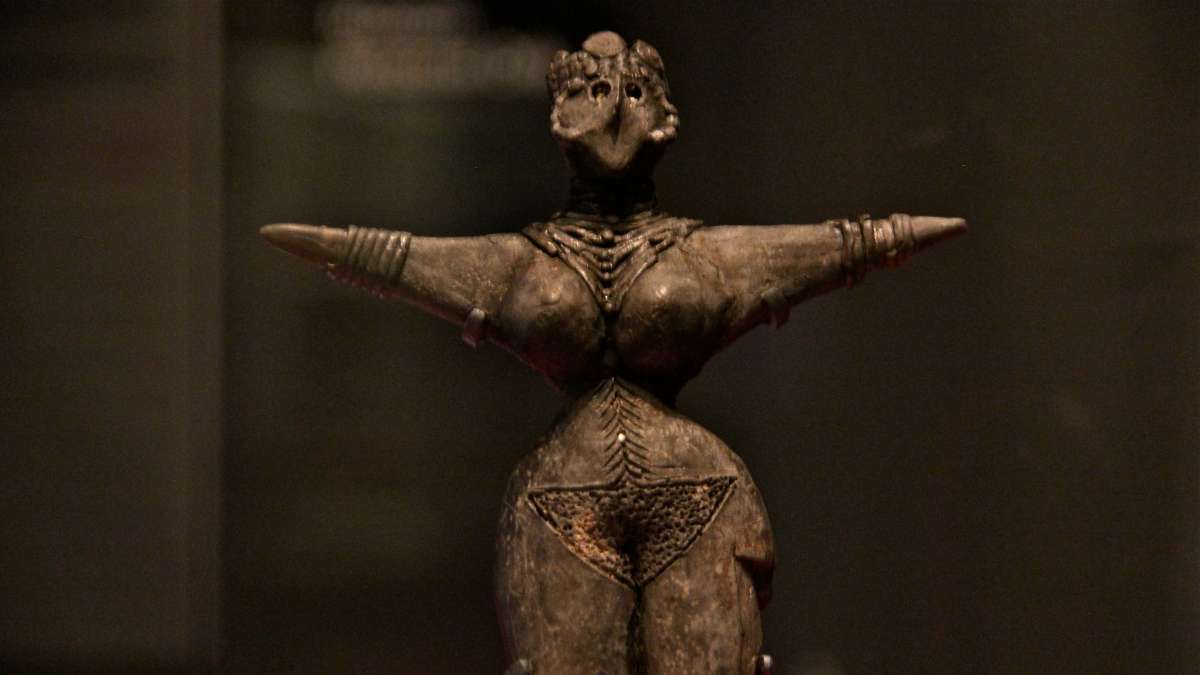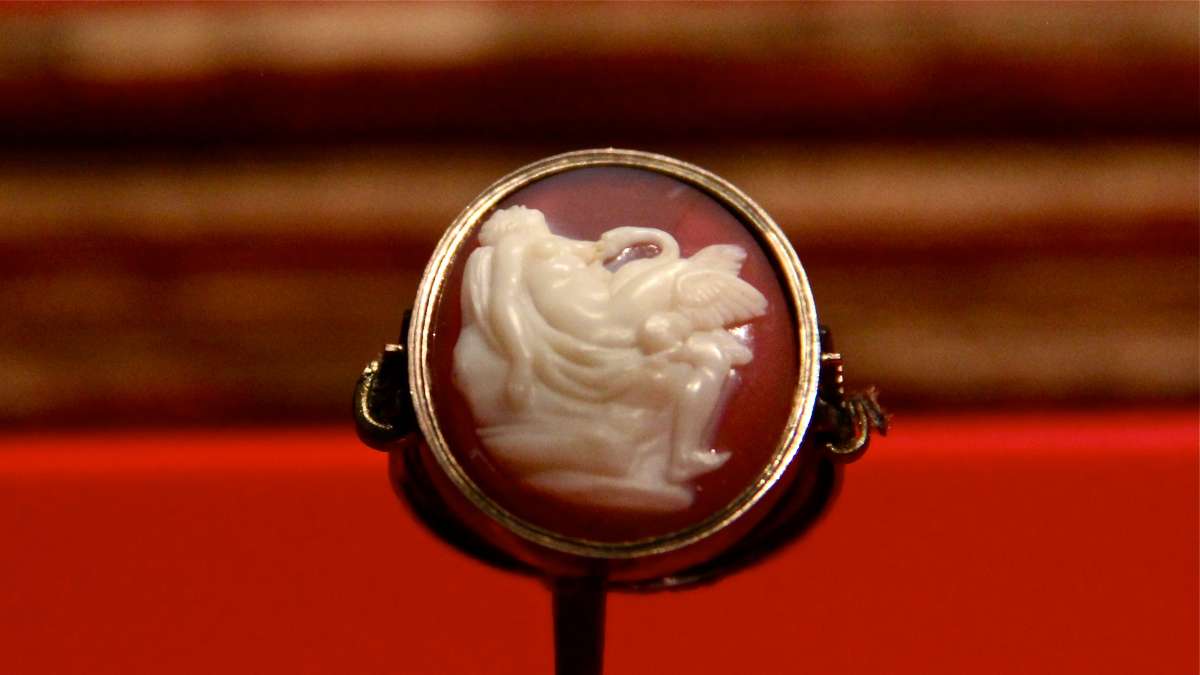Penn Museum exhibit encapsulates 5,000 years of sex in 30 objects
ListenThe University of Pennsylvania Museum of Archaeology and Anthropology wants you to get your mind out of the gutter.
“We think a lot about sex right now,” said Lauren Ristvet, associate curator at the museum. “But I wanted to denaturalize that — de-naturalize what we might think is normal about sex, by looking at how it’s done in this anthropological perspective.”
Ristvet put together “Sex: A History in 30 Objects,” ranging from a nude female figurine from 3000 B.C., to a Native American relief sculpture made just a few year ago. The artifacts express wide differences in gender identity, social roles, and the physical act itself.
From Papua New Guinea, a carved wooden bowl depicts two figures copulating in the least sexy way, possible.
“They’re copulating, but there are barely touching,” said Ristvet. “They’re really kept separate except for the point of meeting with the genitalia. It’s understanding how earth and sky come together, and how the world works, keeping people both separate and together.”
The way you understand how the universe works affects the way you have sex. A 19th-century Buddhist thangka painting from Tibet shows couples engaged in rapturous sex to access a certain spiritual deity. It’s next to a sandstone bust of a yogini — a female yogi from 10th century India — that was likely part of a cult whose practitioners would commune with Rama through ritualistic sex and blood sacrifice.
A beaded bag from the Lakota tribe of the Great Plains has the symbol of the double woman, which could refer to a kind of transgendered person. Some Native American tribes of the Great Plains had a three-gender social system. The Lakota understood some people to be two-spirit, male and female, who stood in a unique place in tribal society.
“People in the Lakota were winkte, often biologically male but adopted female roles in the society, but not entirely,” said Ristvet. “They served in a completely different role.”
Ambiguous gender is depicted in the most recent artifact in the show, a ceramic wall hanging made in 2012 and acquired by the museum last summer. “American Gothic” is a self-portrait by Rose Bean Simpson, a reworking of the iconic Grant Wood painting, wherein the artist is both the male and female, dressed in traditional Pueblo feathers.
The 30 objects are part of a larger, campuswide series of events at Penn related to the science, politics, history, and literature of sex. The events are a mixture of academic and popular, including films by Pedro Almodovar and Michael Winterbottom, and lectures by legal scholars and scientists.
Harvard epigeneticist Susan Richardson studies how environmental stimuli affect the expression of genes: how social nurture changes biological nature. She has made breakthroughs in understanding how gender identification is more complicated than X and Y.
“This is a perfect example of how scholars are really opening up the conversation in helping people understand sex may not be what we understand it to mean,” said Jennifer Conway, associate director of the Penn Humanities Forum.
The exhibit continues through July.
WHYY is your source for fact-based, in-depth journalism and information. As a nonprofit organization, we rely on financial support from readers like you. Please give today.





